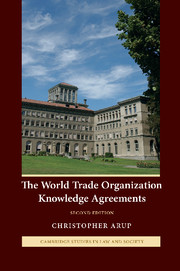Book contents
2 - A global context
Published online by Cambridge University Press: 23 February 2010
Summary
Chapter 2 provides the global framework for the analysis of the two new WTO agreements and the impact they are having on the inter-legalities of legal services, genetic codes and onlinemedia. It gives some definition to the three key concepts we shall be carrying with us through the studies. It begins by suggesting why globalisation is both something new and something old. It spends time considering how globalisation reconfigures the plural legalities of the world. Sources of convergence are identified in the ways economies work but also in the role of cultures. The chapter notes too, the influence of politics and the complex processes of regulatory competition and cooperation and global governance.
The contention here is that diversity remains sustainable, even if that diversity increasingly comes to be treated as difference. Convergence theory tends to suggest that nation states must offer the same regulatory regime if they are to meet the expectations of global suppliers. But it appears that localities retain some leeway to vary their approaches and, indeed, globalisation provides opportunities for the expression of new differences, both as inward looking resistance and outward looking activism. So too it is necessary for us to be prepared to ‘deconstruct’ the content of global legalities and here we can appreciate that they do not push simply in the direction of some kind of standardised regulation. Globalisation creates new terrain, social fields on which legalities interact and regulate each other.1 So within globalisation, we are likely to be exposed to currents which are running opposite ways, towards destruction and creation, deregulation and re-regulation, disconnection and re-attachment, exclusion and access.
- Type
- Chapter
- Information
- The World Trade Organization Knowledge Agreements , pp. 22 - 64Publisher: Cambridge University PressPrint publication year: 2008

